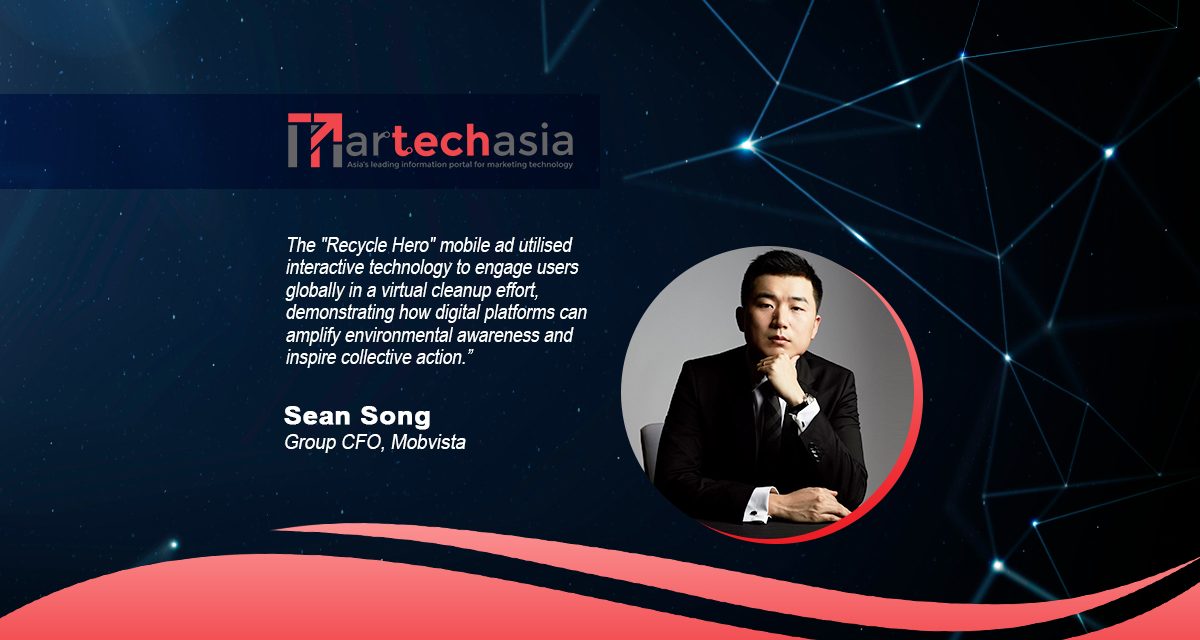World Environment Day reminds martech organizations of the urgency of global sustainability efforts, a critical challenge confronting the tech sector.
Despite widespread climate disruptions, recent US data reveals that only a mere 16.7% of IT professionals prioritise sustainability, a concerning statistic.
The industry’s energy consumption stands poised to triple by 2030 and is projected to rise from 2,370 TWh (accounting for 11% of total global electricity consumption) to 8,000 TWh by end decade.
This alarming trajectory poses a stark question: Can we afford to overlook the environmental impact of our technological progress?

The imperative for ESG in tech
The imperative for robust Environmental, Social and Governance (ESG) strategies has never been clearer. World Environment Day must act as a catalyst for the tech industry to rethink its role, not as passive observers but as a pivotal force in shaping a sustainable future.
In this context, we must ask ourselves — not just as companies but as stewards of innovation — how can we drive substantial change?
Across Asia Pacific, a shift is noticeable with a growing number of tech companies integrating ESG into their strategies. Last year, 77% of businesses in the region incorporated ESG measures in executive incentive plans, up 14% from 2022.
However, while the intent to adopt sustainable and responsible practices is commendable, the real challenge lies in effective integration. Do companies truly know how to effectively integrate these practices? How do we transform these intentions into impactful actions?
Start with purpose
Transforming rhetoric to action begins with a profound reassessment of our operational commitments and business goals. A useful starting point is to examine one’s purpose — not just in terms of business goals but also in contributing positively to societal and environmental outcomes.
For tech companies, particularly those like ours with substantial dependencies on data centres, the environmental stakes are high. These centres are notoriously energy-intensive, operating continuously, often at suboptimal levels — contributing to 3-4% of greenhouse gas emissions globally. Face it: the hours you spend scrolling on apps and social media, as entertaining as they might be, are a major source of carbon emissions.
Addressing this starts not only with optimising operational efficiency but also with fundamentally rethinking how and why we use energy.
Admittedly, while it is aspirational for tech companies to address all aspects of ESG, achieving excellence in all aspects of ESG can be daunting due to resource constraints and the complexity of the issues involved.
However, by prioritising and strategically planning our efforts, significant strides can be made. This begins with a thorough assessment of how our business operations align with broader ESG goals, leading to the setting of actionable objectives that effectively address these priorities.
Extending beyond profitability, true corporate purpose also involves forging deep connections with our communities and driving social value. Our efforts, for instance, have ranged from upgrading facilities for the elderly to donating educational and recreational resources to children with special needs.
Such initiatives showcase how tech companies can extend their impact beyond traditional business boundaries, embodying a holistic approach to ESG that nurtures genuine societal contributions.
Make technology part of the solution
Moreover, we must leverage technology itself as a solution. One approach is to include not just incremental improvements in energy efficiency, but also harnessing renewable energy sources extensively.
By integrating Artificial Intelligence (AI) and energy management systems, we can dynamically manage and significantly reduce energy consumption. For example, rather than constructing proprietary data centres, Mobvista opted for leveraging public cloud services through a cloud-native architecture. Our “SpotMax” cloud resource optimisation solution was implemented to use these idle resources efficiently, ensuring service reliability, improving cloud server usage, and reducing indirect power consumption.
In a practical application of how technology can catalyse change, we initiated a public interest campaign for World Cleanup Day in 2023. The “Recycle Hero” mobile ad utilised interactive technology to engage users globally in a virtual cleanup effort, demonstrating how digital platforms can amplify environmental awareness and inspire collective action.
The complexity of today’s environmental challenges requires more than isolated efforts; it demands widespread collaboration. Sharing technologies, strategies, and visions across the industry is vital. Furthermore, this cooperation must extend to governments and regulatory bodies to foster systemic changes that solidify a sustainable future for all.
ESG as a continuous journey
As an ongoing commitment to ESG, we need to view it not as a finite achievement but as a continuous journey of innovation and adaptation. Staying ahead will require agility — to adopt new technologies, refine methodologies, and engage with emerging trends that redefine the business landscape.
As we commemorate World Environment Day, let it be a call to action for the tech industry not just to innovate but to innovate responsibly. The road ahead is complex. Yet with a unified approach to ESG, we have the potential to redefine the landscape of technological innovation to be as sustainable as it is groundbreaking.


















